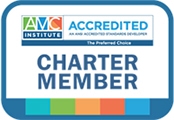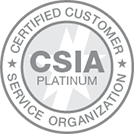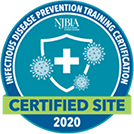The primary skill you need to successfully create and run a company or any type of organization for that matter is “leadership.” The better leader you are, the more successful you’ll be. While there may be such a thing as a “born leader,” I believe that anyone who really wants to be an effective leader can become one if they’re willing to devote the time and effort to it.
Step one in improving your leadership skill is to recognize that it’s, in fact, a way of thinking; a mindset. Leaders simply think differently than non-leaders. And, to a large extent, leadership thinking is contrary to basic human nature. That’s why it takes time to master it and why great leaders are so rare.
The Leadership Mindset
Over the course of my career, I gradually learned how to be a more effective leader—more slowly than I would have liked and usually by trial and error. But, frankly, it wasn’t until I sold my company and could objectively look back at my own strengths and blind spots as well as study the attributes of truly great leaders that the concept of a leadership mindset began to fall into place. I’ve now come to believe that the thinking and actions of virtually all successful leaders are governed by six guiding principles.

1. Focus on the Mission
“A small body of determined spirits fired by an unquenchable faith in their mission can alter the course of history.” –Mahatma Gandhi
While human nature pushes us to focus on short-term urgent matters, a leader is not a leader without passionate commitment to a clear, compelling, long-term mission. In a business or nonprofit, that mission always involves somehow improving the lives of customers and, by so doing, other stakeholders as well. Ideally, a well-defined mission includes both a “purpose” for existence and a “vision” of perfect purpose fulfillment.
And because you're likely to have competitors, your mission needs to offer customers more value than your competitors can. Obviously, you can't figure out how to improve people's lives unless you thoroughly understand their needs. So that's the knowledge base from which your mission will emerge. Once you've taken that knowledge and identified life-changing benefits you can deliver, you need to make sure your mission is not only clear to you, but also to your investors, your employees, and other key stakeholders. This is best done by carefully crafting a “mission statement.” It will provide both motivation and direction for your company’s efforts.
2. Think Holistically
“A system is more than the sum of its parts; it is an indivisible whole. It loses its essential properties when it is taken apart.” –Russell Ackoff
Leaders understand that a business or nonprofit is a “system” that you must design and build to accomplish your mission. On the contrary, human nature tends to draw us into working on the details of things while losing sight of the whole. Leaders know they need to always keep the overall business system in mind—the mission, culture, processes, required resources, and financial formula. They are able to maintain the 40,000-foot high view—seeing all the system components and the way they interact with each other and seeing how the internal system interacts with external systems like the marketplace. They know that fixing a component is not enough to fix the entire system and that tinkering with one part will have an impact on the rest.
3. Embrace Evolution
“Perfection is not attainable, but if we chase perfection we catch excellence.” —Vince Lombardi
A leader knows that a business or nonprofit is not born as a finished entity but needs to evolve over time. Human nature causes us to want quick results and get frustrated when we don’t get them. Leaders recognize that missions are achieved by the steady, relentless, ongoing process of always comparing an accurate assessment of current reality to the vision of perfect mission accomplishment and then improving the business system to close the gap. A leader thinks of running an organization as a proactive journey of continuous improvement informed by experience and necessitated by changes in the marketplace. Ups and downs are a necessary part of the process. A static, un-evolving enterprise, on the other hand, is doomed to failure.
4. Leverage Processes
“If you can’t describe what you are doing as a process, you don’t know what you’re doing” –W. Edwards Deming
Leaders appreciate the power of process thinking. It’s human nature to treat each event in a reactive way and as a discrete event. A leader recognizes that there are repetitive activities in every business or nonprofit that are critical to accomplish the mission. And that these activities can be designed to efficiently produce consistent, high-quality, competitor-beating results. It takes discipline to develop and implement processes and leaders understand the importance of discipline. In the words of Jim Rohn, “We must all suffer one of two things: the pain of discipline or the pain of regret or disappointment.”

5. Enable Teamwork
“The strength of the team is each individual member. The strength of each member is the team.” –Phil Jackson
A business or nonprofit is not a machine. It's a system in which people get things done. Leaders don’t do the work themselves; they enable others to successfully do things. So they need to understand the dynamics of what enables people to work well on their own and with each other. This even extends outside the organization itself to the enterprise’s suppliers and channel partners. It can be a balancing act at times. On one hand, you need to treat employees with respect and sensitivity to their needs. On the other hand, each individual must be held accountable for doing their job. To accomplish this, first and foremost you need to recruit “mission-appropriate” and team-oriented people. Then you need to make sure they know and understand their roles and expected performance. Finally, you’ll need to create and maintain an environment and culture that enables them to work together to fulfill the common mission. That culture is very much influenced by the example a leader sets through their own actions and interactions.
6. Seek Simplicity
"Great leaders are almost always great simplifiers, who can cut through argument, debate and doubt to offer a solution everybody can understand." –General Colin Powell
Leaders simplify and clarify. But, making things simple is hard work. Simplification is contrary to human nature. The innate tendency is to add things, to make things more complex—more features on products than customers need, more steps in processes than are really necessary, pricing schedules too convoluted for customers and employees to understand. Simplicity allows focus and prevents unnecessary costs and actions. Seeking simplicity means not adding what isn’t absolutely necessary and eliminating what is no longer necessary. It means breaking up big projects into small chunks. It means expressing your mission and culture in clear, simple terms. And it means recognizing and reinforcing simple financial fundamentals like the need to budget and not letting your expenses exceed your revenues.
Next Steps
Assuming you have a clear and compelling mission and vision that you and your staff share (if not, start there), see if there’s one of these guiding principles that you’re not currently practicing and that, if adopted, could have a significant positive impact on your organization. Then start practicing it each day until it becomes second nature. Don’t expect quick improvement (see “Embrace Evolution”). It might help if you can find a coach to give you feedback and encouragement. If you get good results, move on to the next principle and repeat.




